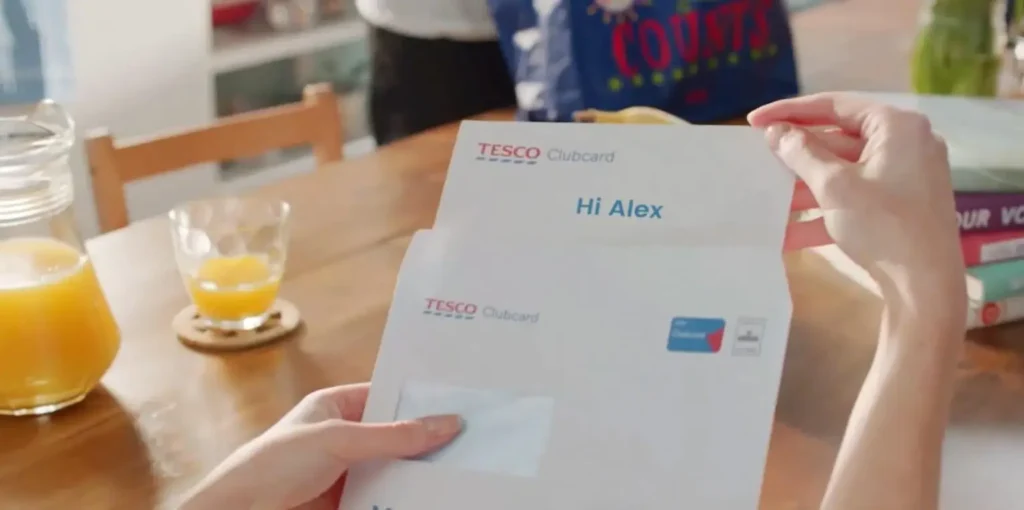If you want to evaluate how effective your customer service program is, simply take a look at your customer retention rate.
To put it simply, the definition of retention is keeping your customers. More broadly, it includes the actions brands take to reduce customer churn.
The retention rate meaning, therefore, is a measure of the effectiveness of those actions. Calculating your retention rate is the quickest, simplest and most accurate way to track how healthy your current customer base is, and it’s a good way to predict future growth.
But why should you learn how to calculate customer retention rate when there’s a whole world of new potential customers out there waiting for your next brilliant advertising campaign? Here are some stats that might surprise you.
The Value of Retention
It can be tempting to focus more on acquiring new customers than keeping your current ones — but there are solid reasons why you shouldn’t ignore customer retention.
For starters, depending on the industry you’re in, it can be anywhere from 5x to 25x less expensive to keep an existing customer than it is to find, nurture and convert new ones. Plus, loyal customers have been found to be worth up to 22x more than the average customer.
These numbers make sense when you dig a little deeper. Customer acquisition costs have increased 222% in the past decade, suggesting it’s become much more difficult to grow your customer base than before. Meanwhile, 65% of retail business comes from loyal customers, who spend 67% more on an average purchase than new customers.
And that’s not even touching on the power and influence that loyal customers hold. A whopping 86% of brand-loyal customers recommend their favorite brands to friends or family. The customers who love and trust your brand are also 1.9x more likely to defend you against criticism.
In short, your repeat customers are the ones who cost less to keep, spend more and advocate for your brand, organically spreading the word to those around them. So is investing in customer retention worth the investment? It’s a no-brainer.
Before we get into the formula itself, if you want this blog post in a quick overview, check out our video below. We made this in a matter of minutes, no video skills required, thanks to our advanced AI video tool.
Now on to the math!
How To Calculate Customer Retention Rate
Now on to how to calculate retention rate. The following customer retention rate formula is an easy way to accurately measure the number of customers you retain within a certain time frame. If you’re not a numbers person, it’s not too complicated. You just need to locate a few key data points and plug ’em in.
Here’s how to calculate your retention rate for a particular time period:
Retention Rate = ((CE-CN)/CS)) x 100
CE = number of customers at end of period
CN = number of new customers acquired during period
CS = number of customers at start of period
Here’s a retention rate calculation example:
Let’s say you start the month with 500 customers. During the month, you lose 50 customers but also gain 80 new ones. By the end of the month, you have a total of 530 customers. Here’s how you’d calculate your customer retention rate in 3 easy steps:
- Calculate the number of retained customers: Subtract the number of new customers (CN) from the total number of customers at the end of the period (CE). In this example, it would be 530 – 80 = 450 retained customers.
- Divide by the number of customers at the start (CS): 450 / 500 = 0.9.
- Convert to a percentage: 0.9 x 100 = 90%
And that’s it. Your retention rate for the period was 90%.
Note that customer retention rate is the inverse of attrition (or churn) rate. In this case, a 90% retention rate would mean a 10% attrition rate.
It’s also worth mentioning that some people, especially those in B2B SaaS or subscription-based businesses, find it more helpful to calculate their net dollar retention rate (NDR) instead. Calculating NDR offers a different perspective on customer value because it looks at how much revenue (rather than customers) is retained or lost.
Why does this matter? Well, consider this scenario: you have a group of customers that renew their monthly subscription but they downgrade from a $100/month plan to a $50/month plan. Despite the customer count staying the same, your revenue would drop significantly and strategies may need to be adjusted to deal with this.
So how do we calculate NDR? Here’s the formula:
Net Dollar Retention Rate = ((RS + RU – RD – RC)/RS)) x 100
RS = recurring revenue at the start of the period
RU = additional revenue due to upgrades
RD = decreased revenue due to downgrades
RC = lost revenue due to churn
Let’s run through a quick example. Say your company starts off one month earning $100,000 in recurring revenue. At the end of the month, you add $50,000 due to current customers upgrading their plan, lose $20,000 due to downgrades and lose $10,000 from customers canceling (churn).
Plugging the numbers into the formula, the calculation would look like this:
[($100,000 + $50,000 – $20,000 – $10,000)/$100,000] x 100 = 120% NDR
Post on
In other words, despite some customers downgrading or canceling, your overall recurring revenue has increased due to upgrades from existing customers. This positive NDR indicates a healthy scenario where your upselling and customer satisfaction efforts are effectively driving growth.
Both customer retention rate and net dollar retention rate can be calculated to give you a complete picture of how well you’re retaining your customers and the revenue they generate. This will help you make informed, data-driven decisions down the line.
What’s a Good Retention Rate?
Now that you know how to calculate customer retention rate, how do you know when you’ve got a strong one? The typical retention rate across industries is between 70% and 80% but each industry has its own average. Here are a few:
- Media: 84%
- Insurance: 83%
- IT services: 81%
- Financial services: 78%
- Telecommunications: 78%
- Healthcare: 77%
- Banking: 75%
- Retail: 63%
- Travel and hospitality: 55%
Net dollar retention rate can also vary by industry. Top-performing SaaS companies typically have an NDR of over 120%, though the approximate median is around 106% and anything over 100% is a good sign.
While industry averages are helpful, don’t neglect to figure out your own internal benchmark. It’s important to calculate your retention rate so you know if you’re gaining or losing ground. In some ways, a good retention rate is simply a significant increase from your retention rate from the previous period.
What To Do After Calculating Retention Rate
If after calculating your retention rate, you don’t like what you see, fear not. Improving a poor retention rate isn’t as complicated as you may think.
Like most relationships, preserving a positive relationship comes down to communication. Are you communicating clearly, personally and in an engaging way? Do you meet and exceed customer expectations at critical points in the customer journey?
An essential strategy is to reach out when a customer may be at risk of churn. One key moment to re-communicate the value your brand offers is during a renewal period. This is a classic time to reach out and remind customers why they should stay with you.
For example, rather than sending paper communications, Zurich took an innovative approach to reminding insurance customers of their upcoming renewals. Personalized Videos provided viewers with relevant, valuable information about their plan, while contact and call-to-action buttons made it easy to ask questions and take the next step.
The end of the year is another great time to reinforce loyalty and encourage customers to stick with you into the new year.
Delta did just that with their Medallion Members, offering a custom year-in-review that highlighted members’ travel over the past year in a dynamic and shareable format.
These kinds of recaps are ideal for helping reinforce customers’ emotional bond with a brand. They’re also effective across industries. Hi-Rez, a gaming brand, used a personalized recap to double the game time of players who watched. It also saw a 25x increase in new users and an uplift in revenue from in-game purchases.
Here’s another example of going above and beyond when it comes to customer retention. See how Vodafone helped VeryMe Rewards members understand the value of their loyalty program. The personalized data, from the customer’s first name to the number of treats they enjoyed on #FeelGoodFriday, takes things up a notch.
It’s meaningful and fun interactions like these that let you surprise and delight your customers, and that paves the way for reduced churn and better brand loyalty.
To sum up, improving retention isn’t just about one-off efforts. It involves consistent strategies that impact the entire customer journey. Here are a few more bits of advice to take with you:
- Understand that customer happiness starts from within. Happy employees usually mean happy customers.
- Transparency is king! Communicate clearly and frequently when internal changes might affect external operations.
- Personalized communication can be your strongest ally in creating loyal customers.
- Keep an eye on how your competitors are innovating and what new perks they’re offering consumers.
- Never stop adding value to your brand and to every touchpoint with consumers — even customer service.
- Customers are going to leave — it happens — but ask them why before they go, such as with a survey, so you can improve going forward.
Pro tip: You can include a survey and other interactive features in videos you share with customers to further boost engagement. Consider your goals, where it’s showcasing your value, getting feedback, upselling or something else, so your Interactive Video focuses on those key actions, just as American Airlines for their video below. Interact with it yourself to see how it works!
Ultimately, actively optimizing your customer retention strategy is essential for driving business growth and improving customer loyalty. And with the right tools, you can significantly boost engagement and reduce churn at pivotal moments in the customer journey.
Next Gen Video: A Powerful Tool for Retention
Next Generation Video can dramatically improve your customer retention approach. And thanks to advancements in AI, creating video content is also easier than ever.
Our Next Generation Video Platform leverages cutting-edge technology to craft dynamic, tailored videos that not only engage your audience but also help you retain them.
Just take a look at some of our clients’ results:
- 17x user reactivation
- 85% renewal rate
- 37% 90-day churn reduction
- +31 NPS points
Whether you’re in insurance, utilities, hospitality or any other sector, we’ve got proven solutions that can transform your customer retention efforts. Curious to see how it works in action? Get in touch and we’ll show you how you can make the most of Next Generation Video to keep your customers coming back for more.










